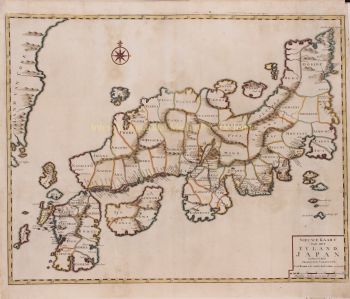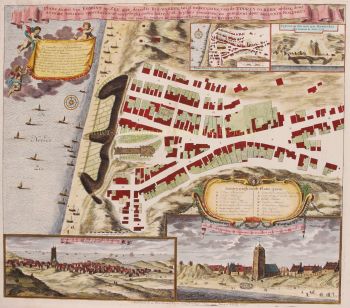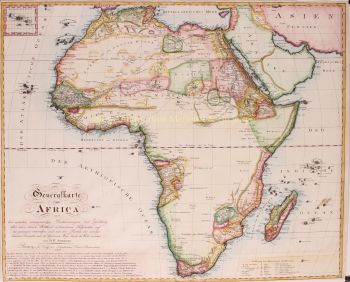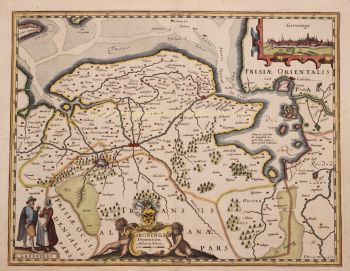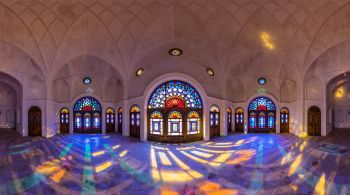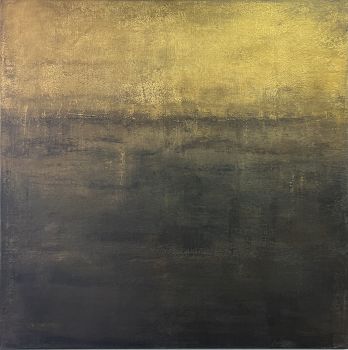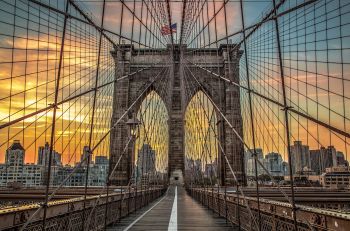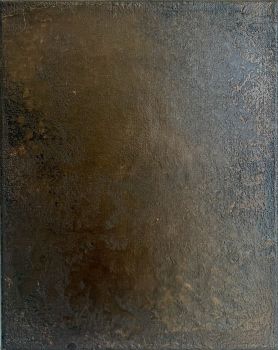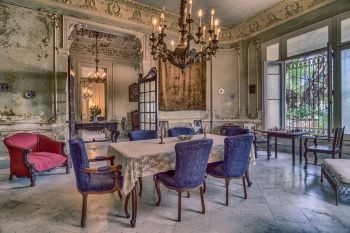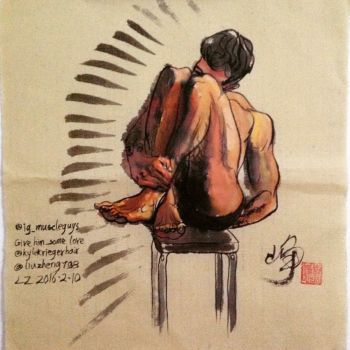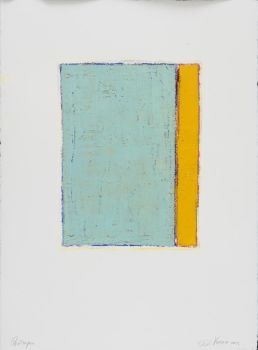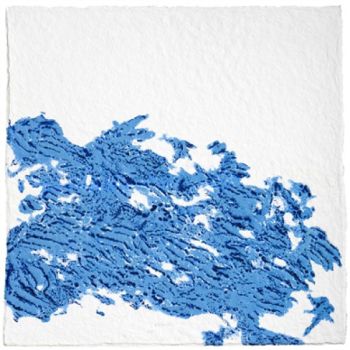Wereldkaart 1660
Frederick de Wit
Papier
€ 11.500
Inter-Antiquariaat Mefferdt & De Jonge
- Over kunstwerkNova Totius Terrarum Orbis Tabula. Copper engraving made by Frederick de Wit 't Amsterdam in de Calverstraat inde Witte Pascaart 1660, published in De Zee-Atlas Ofte Water-Wereld of Hendrik Doncker in Amsterdam from 1660 to 1670. With original hand colouring. Size: 47 x 56 cm (plus margins). This was De Wit's first world map. He derived it from the two hemisphere maps from Blaeu's wall map of 1648, reducing them in scale and making some changes. (Joan Blaeu's own smaller world map with two hemispheres can be found here.) The upper corners contain northern and southern celestial maps and the lower corners show north and south polar projections. In the bottom center are astronomical diagrams -- a geocentric one on the left and a Copernican one on the right. The top center vignette shows the sun encircled by a zodiacal ring. Between the maps and diagrams are four vignettes with allegorical depictions of the Four Elements (air, fire, earth and water). The map also includes Baroque decorations of garlands of fruit and flowers. A magnificent example of the art of mapmaking, this map is one of only 19 reproduced in color in Rodney Shirley's major scholarly work on world maps of the 15th to 17th centuries. In accompanying text, the author states that "[e]specially when richly coloured, De Wit's map is one of the most decorative standard-size maps of the time and it is much less commonly found than his three other atlas world maps." Frederick de Wit (1630-1706) was founder of a prominent map publishing firm in 17th century Amsterdam, the golden age of Dutch cartography. The De Wit family both published their own atlases and supplied maps to other cartographers such as Hendrik Doncker. Reference: Rodney Shirley (1983)- "The Mapping of the World: Early Printed World Maps 1472-1700", p. 421, plate 311. Price: Euro 11.500,- (incl. frame)
- Over kunstenaar
Frederik de Wit is geboren Frederik Hendriksz. Hij werd geboren in een protestantse familie rond 1629 in Gouda, een kleine stad in de provincie Holland, een van de zeven verenigde provincies van Nederland. Zijn vader Hendrik Fredericsz (1608 - 29 juli 1668) was een hechtmaecker (messenmakerij) uit Amsterdam, en zijn moeder Neeltij Joosten (d. voor 1658) was de dochter van een koopman in Gouda. Frederik is op 29 augustus 1661 getrouwd met Maria van der Way (1632-1711), de dochter van een rijke katholieke koopman in Amsterdam. Vanaf ongeveer 1648 tot zijn dood eind juli 1706 woonde en werkte De Wit in Amsterdam. Frederik en Maria kregen zeven kinderen, maar slechts één Franciscus Xaverius (1666-1727) overleefde hen.
In 1648, in het hoogtepunt van de Nederlandse Gouden Eeuw, was De Wit van Gouda naar Amsterdam verhuisd. Al in 1654 had hij een drukkerij en winkel geopend onder de naam "De Drie Krabben", die ook de naam was van zijn huis in de Kalverstraat. In 1655 veranderde De Wit de naam van zijn winkel in "Witte Pascaert". Onder deze naam werden De Wit en zijn firma internationaal bekend.
Bent u geïnteresseerd om dit kunstwerk te kopen?
Artwork details
Related artworks
- 1 - 4 / 4
- 1 - 4 / 24
- 1 - 4 / 24
- 1 - 4 / 24
- 1 - 4 / 12








